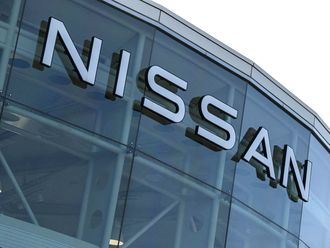When retailers think of video surveillance, it is usually in the context of loss prevention and security. But there is a whole other arena where it can provide enormous value — gathering real-time in-store intelligence to help improve margins.
With the embedded analytics, you can not only observe customer behaviour in-store, but garner real-time statistics to help you improve store layout, product and display placements, and even identify bottlenecks and dead areas on the shop floor. Unlike the hit-or-miss approach of customer surveys and mystery shoppers, network video offers you an accurate and unbiased report of the immediate situation and of changes over an extended period of time.
You get a clear view of how customers move along the aisles, making it possible to optimise shop floor plans and merchandising strategies.
Because the surveillance video is streamed over the network, multiple departments can securely share views of store activity in real-time. Store managers can compare analytics between multiple stores for a range of activities – from customer traffic to sales statistics.
You can even download and share select video with your supply chain to improve inventory levels, merchandise selection and stock turns.
Optimising shop floor plans
You can easily programme the system to generate heat maps that portray customer traffic for selected time periods. These provide valuable input for improving store design to facilitate more inviting access to merchandise. You can also combine mapped traffic patterns with point-of-sale statistics to immediately evaluate the impact of any changes you make to the floor layout — customer flow, items sold and the average sales amount.
Improving end caps and displays
Another way to leverage video intelligence is in the area of product placement and display strategies. Store managers can record video of customer interactions with different displays and then review the heat maps to see how effective these are at attracting shoppers to purchase the featured merchandise.
You can also use video surveillance to compare traffic flow and sales figures between stores with or without a particular end cap or display.
Evaluating advertising and signage
Similarly, you can test the effectiveness of promotional campaigns, in-store advertising and signage by studying the customer flow captured on surveillance video. You can even measure the dwell time customers spend in front of a sign or display.
Intelligent video analytics applications provide a number of key performance statistics, including average viewing time, distribution of viewing time and number of shoppers viewing during a selected time period.
Watching hours and hours of store video can be an extremely tedious and inaccurate way to mine valuable data. Yet, customer traffic patterns can reveal a lot about your patrons.
With strategic deployment, however, you can slash that viewing time by allowing the camera to automatically analyze the video data and glean the useful information for you. The systems use complex mathematical algorithms to extract moving objects or other recognisable forms from the recorded video, while filtering out irrelevant images or movement.
There are numerous advantages to processing as much of the video as possible inside the network cameras. For instance, putting intelligence at the edge helps you:
1. Minimise bandwidth usage — Network cameras can be programmed to only transmit video when they detect motion in a defined area of a scene. This dramatically reduces bandwidth consumption and the number of operators needed to review transmissions. For instance, they can extract a headcount from a frame and send just the essential data with a few snapshots instead of consuming bandwidth with several hours of unfiltered video.
2. Reduce server costs — In a centralised video surveillance architecture, servers typically process four to 16 video streams. When network cameras do the processing, servers can handle more that 100 video streams. For people counting applications, for example, the resulting data (rather than the video stream) can be sent directly into a database, further reducing the load on servers.
3. Improve video surveillance analysis — When network cameras process raw video data before it is degraded by a compression format, the quality of analysis greatly increases. This configuration also reduces the number of servers required to process the transmission because fewer video packets are actually sent along the network for uncompressing or transcoding prior to processing.
4. Lower operating costs — With fewer servers needed, power consumption and maintenance costs drop. This also removes the burden from environments without server rooms to build special facilities to support their video surveillance system.
5. Lower equipment investment costs — Reducing network bandwidth usage by streaming only essential information (metadata and snapshots) gives retailers the option to deploy more moderately-priced network components that can easily support reduced data rates.
Because network video systems are generally built on open standards, they can be easily integrated with your other retail systems to provide a higher level of intelligent analysis. For example, by combining data from your point-of-sale registers with your video surveillance analytics you can determine a store’s conversion rate down to an item level.
Trends in employee performance such as daily efficiencies can also be tracked, indicating the need for additional training or other factors impacting cashier effectiveness.
Retailers who continue thinking of video surveillance strictly as a loss prevention tool are missing a huge opportunity to leverage some truly powerful in-store intelligence.
The writer is Director - Business Development, Retail, Axis Communications.












